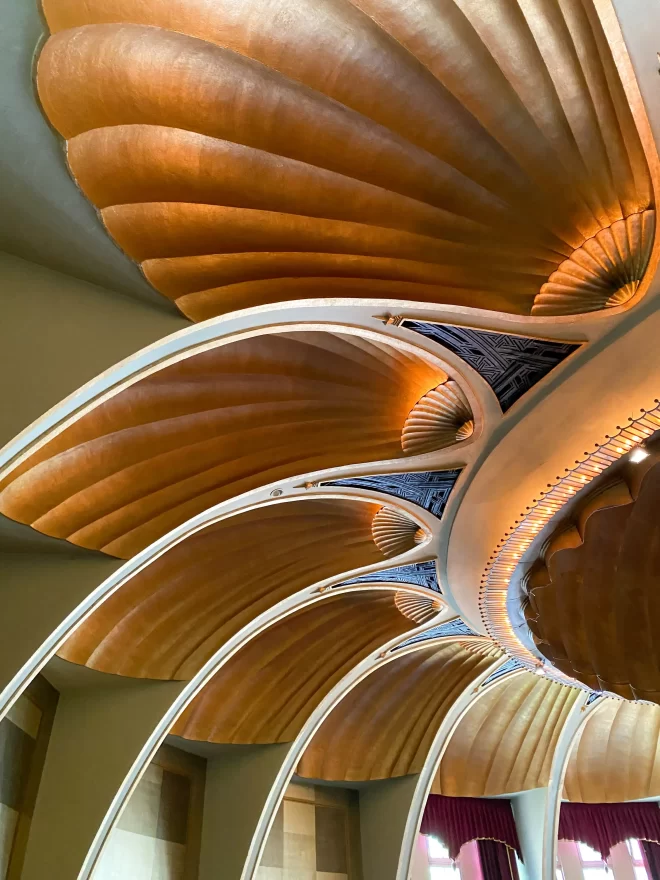1924 – 1926
Architect: Wilhelm Kreis
Joseph-Beuys-Ufer 33, Düsseldorf
Designed by architect Wilhelm Kreis, the listed Rheinterrasse, an event building with a restaurant, was built for the 1926 Düsseldorf Great Exhibition for Health Care, Social Welfare and Physical Exercise (GeSoLei).
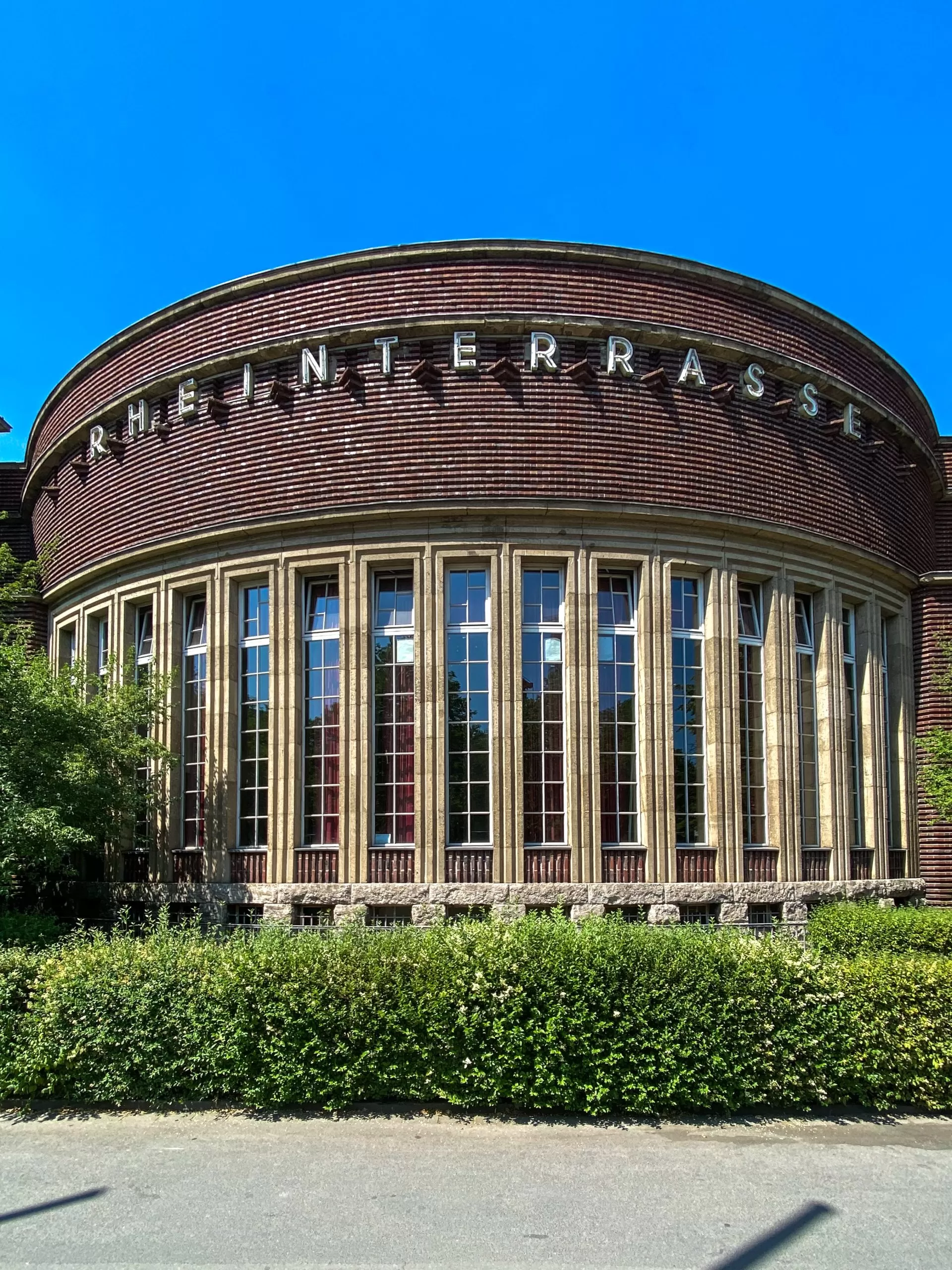
Rheinterrasse, 1924-1926. Architect: Wilhelm Kreis. Photo: Daniela Christmann
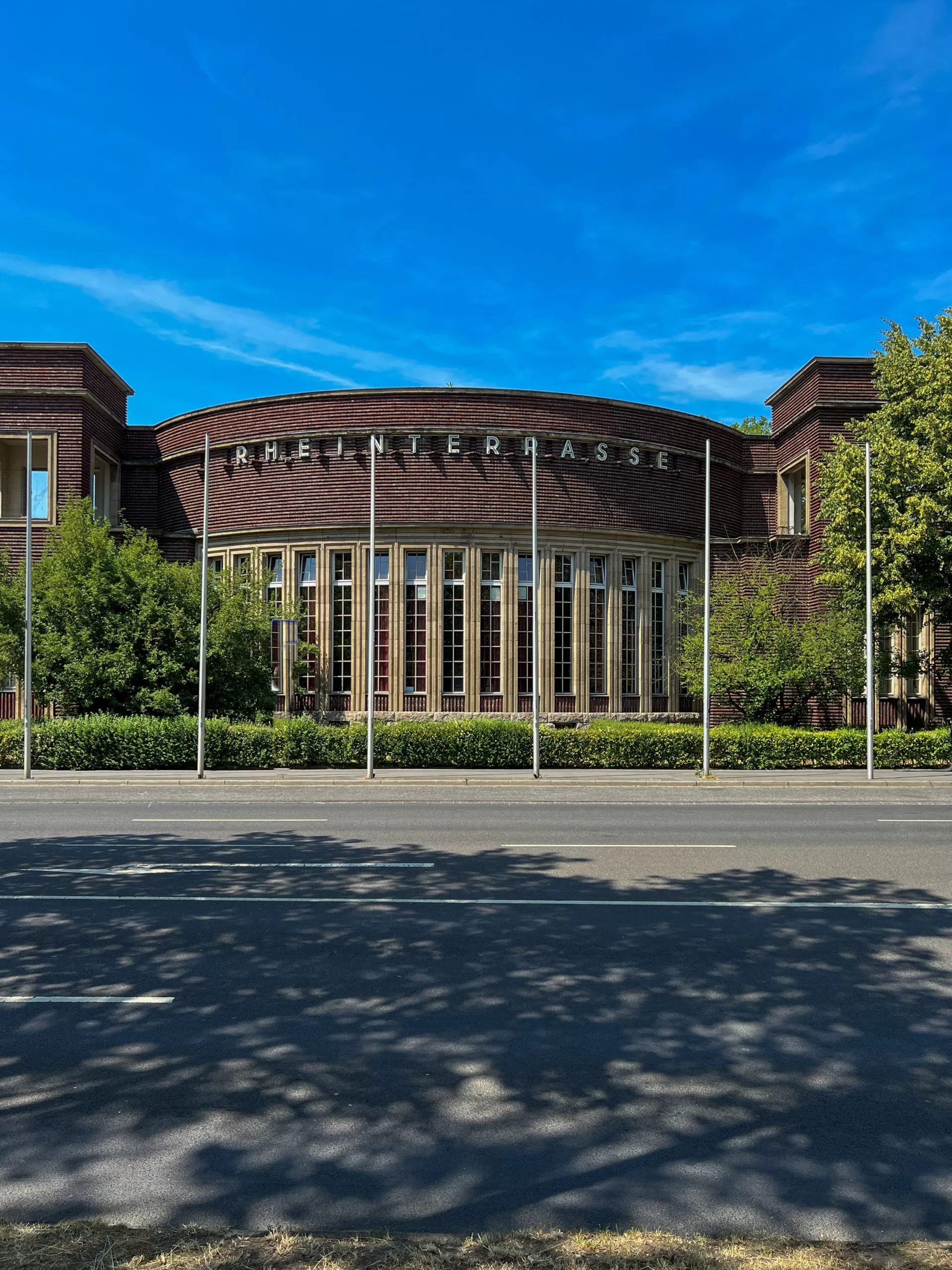
Rheinterrasse, 1924-1926. Architect: Wilhelm Kreis. Photo: Daniela Christmann
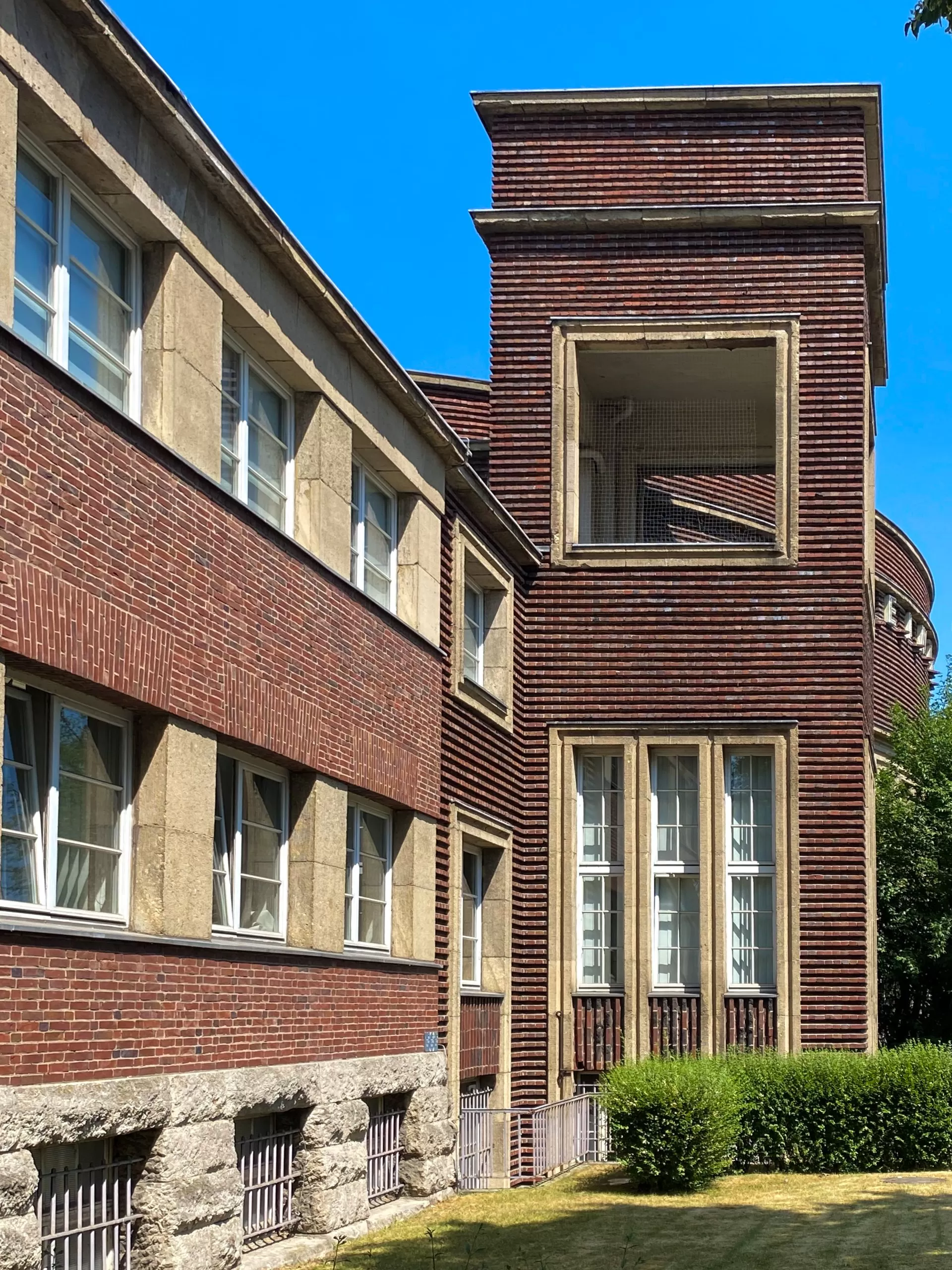
Rheinterrasse, 1924-1926. Architect: Wilhelm Kreis. Photo: Daniela Christmann
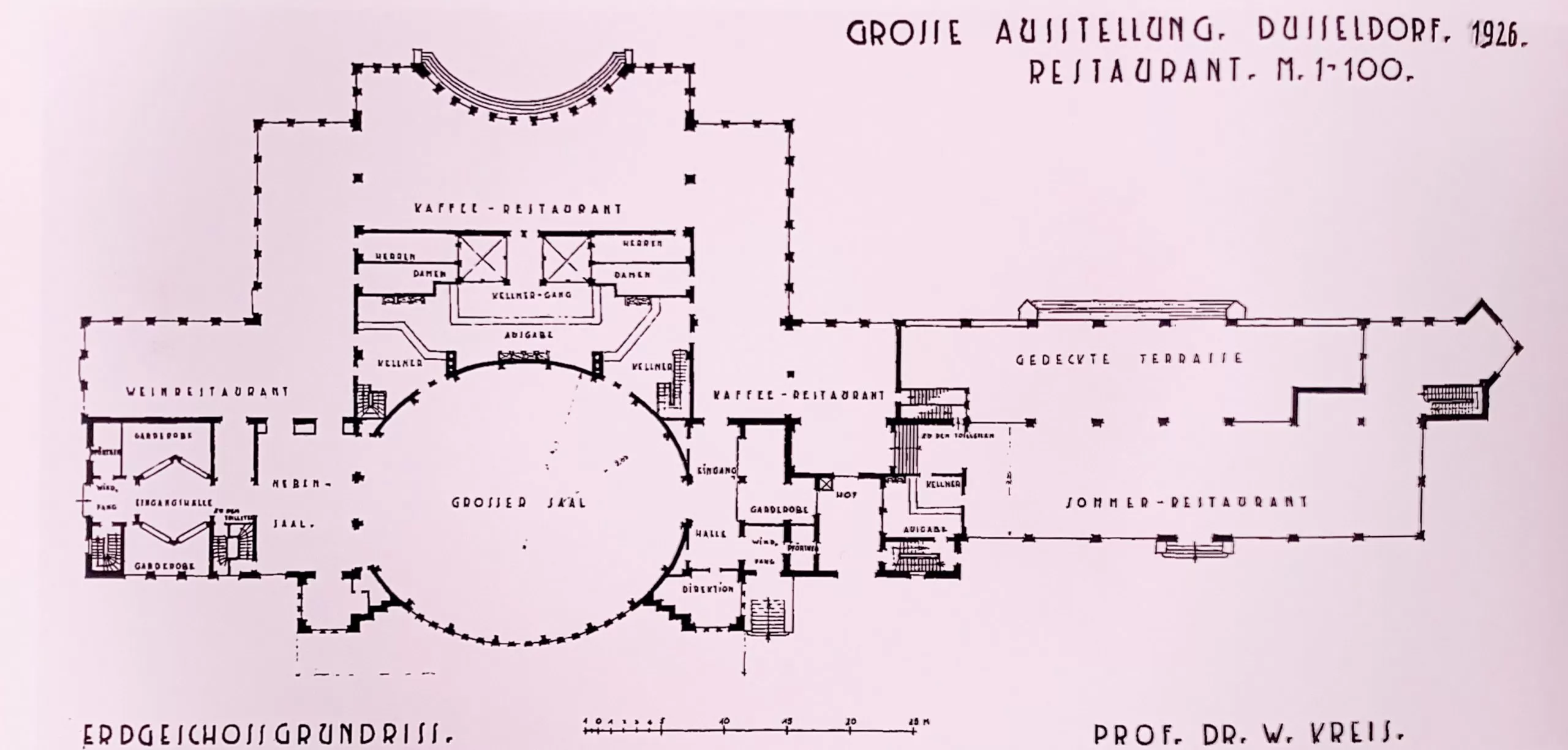
Rheinterrasse, 1924-1926. Architect: Wilhelm Kreis. Floor plan
Buildings of the GeSoLei
Along the Rhine front, starting at the old Oberkassel Bridge, the riverside area was built on over a length of 2 km. The buildings around the Forum for Art and Science and the Rheinterrassenrestaurant were to remain as permanent facilities after the end of GeSoLei.
All other exhibition buildings were intended to last for one year.
The Kunstpalast from 1902 was given a new façade and was thus integrated into the design of the complex. Opposite it, Kreis planned the new art exhibition palace, which was to house the future art museum.
In between was the so-called Court of Honor, which Kreis closed off to the north, leaving only a gate entrance with an open cross-connection on the upper floor.
To the south, two wing buildings delimited the longitudinal axis of the cour d’honneur, which directed the view towards the Rheinhalle, today the Tonhalle, as the central festival hall.
Rheinterrasse (Rhine Terrace)
To the north, the extensive Rheinterrasse complex was located directly on the banks of the Rhine. Its reinforced concrete construction is clad with bricks. Window cornices and pillars made of strips of tuff and lime sand contrast with the dark, reddish-brown brick fields.
The northern wing of the elongated building ends with a canted corner, which, due to its 45-degree rotation, mediates with the curvature of the Rhine and the riverside road.
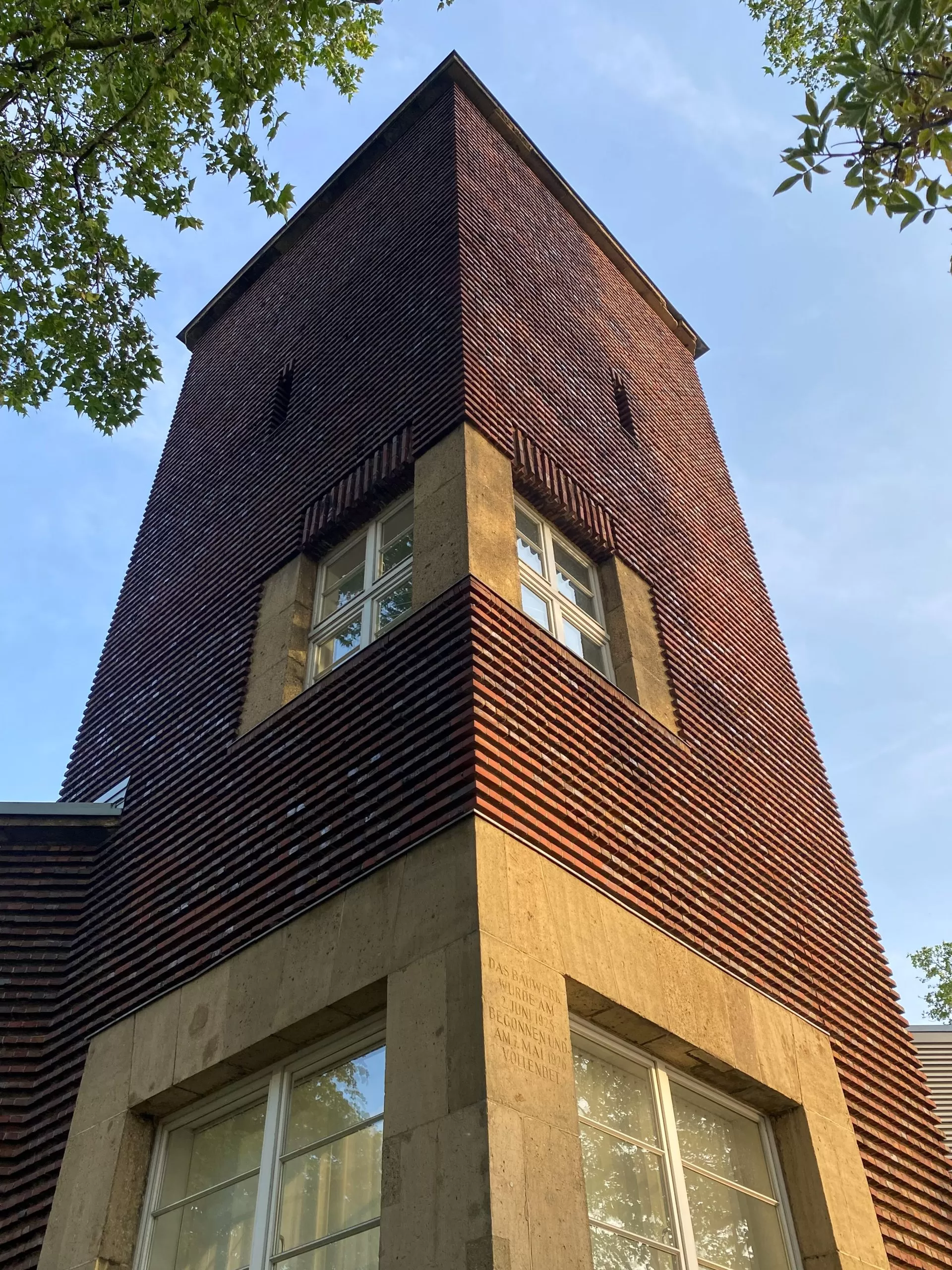
Rheinterrasse, 1924-1926. Architect: Wilhelm Kreis. Photo: Daniela Christmann
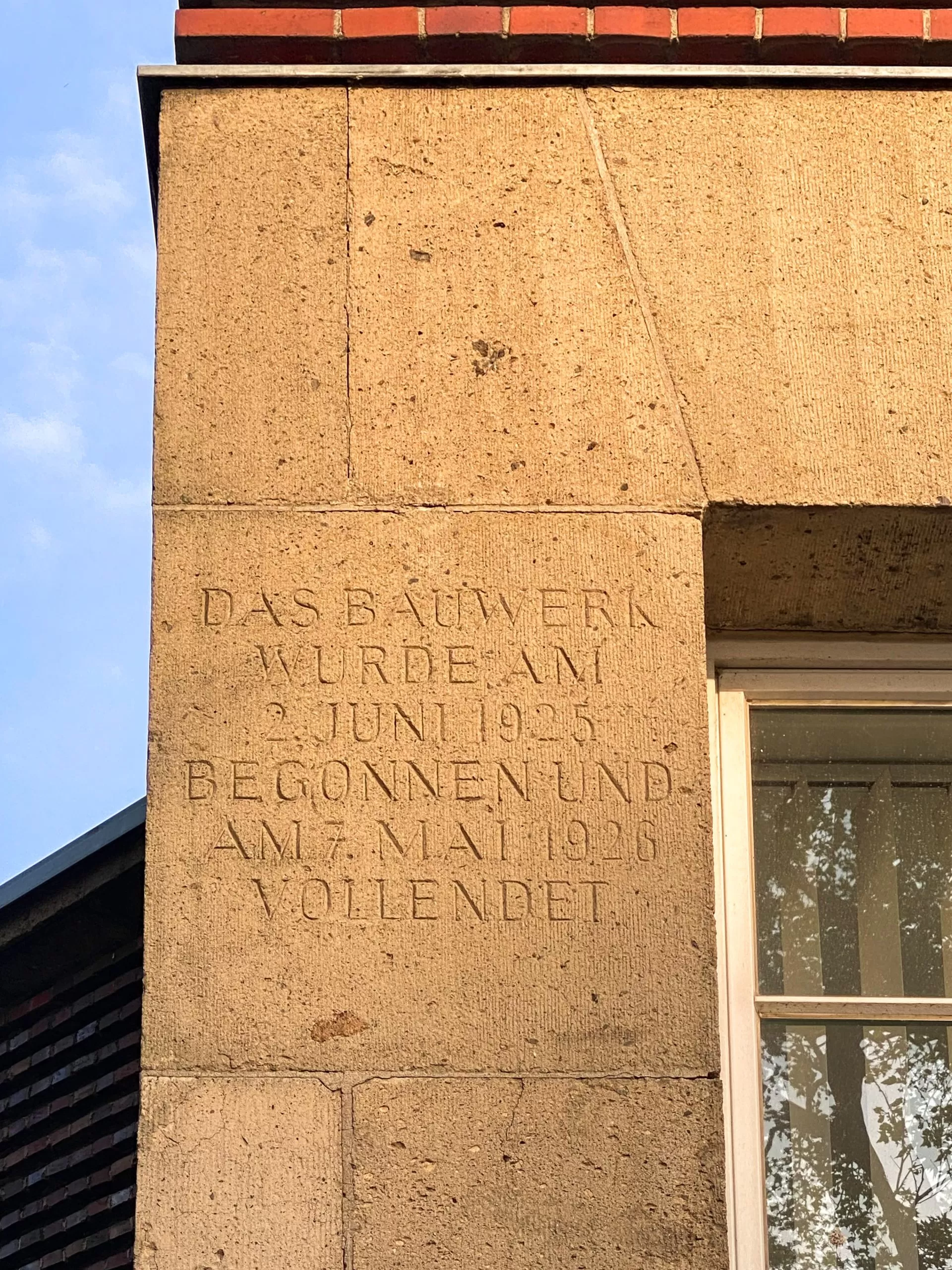
Rheinterrasse, 1924-1926. Architect: Wilhelm Kreis. Photo: Daniela Christmann
Rheingoldsaal (Rheingold Hall)
At the center of the complex is the oval 470 square meter Rheingoldsaal with a shell-shaped dome suspended on buttresses, flanked by a tower on each side of the street façade.
When designing the interior, Kreis sought to realize one of the fundamental ideas of the Arts and Crafts movement by creating a total work of art.
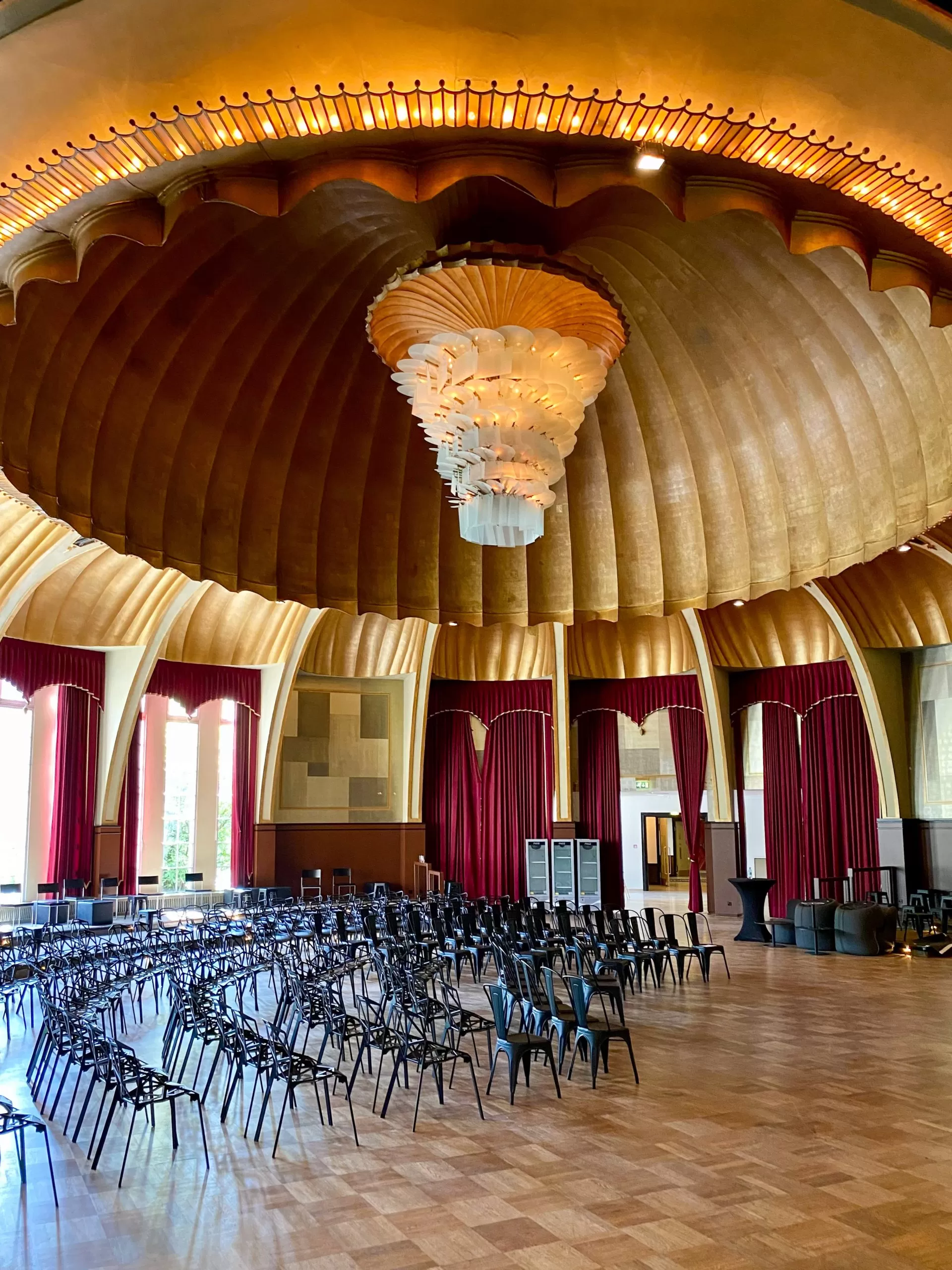
Rheinterrasse, 1924-1926. Architect: Wilhelm Kreis. Photo: Daniela Christmann
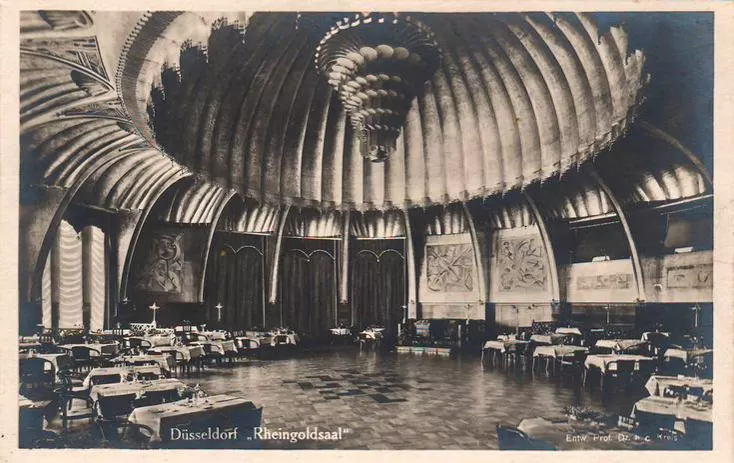
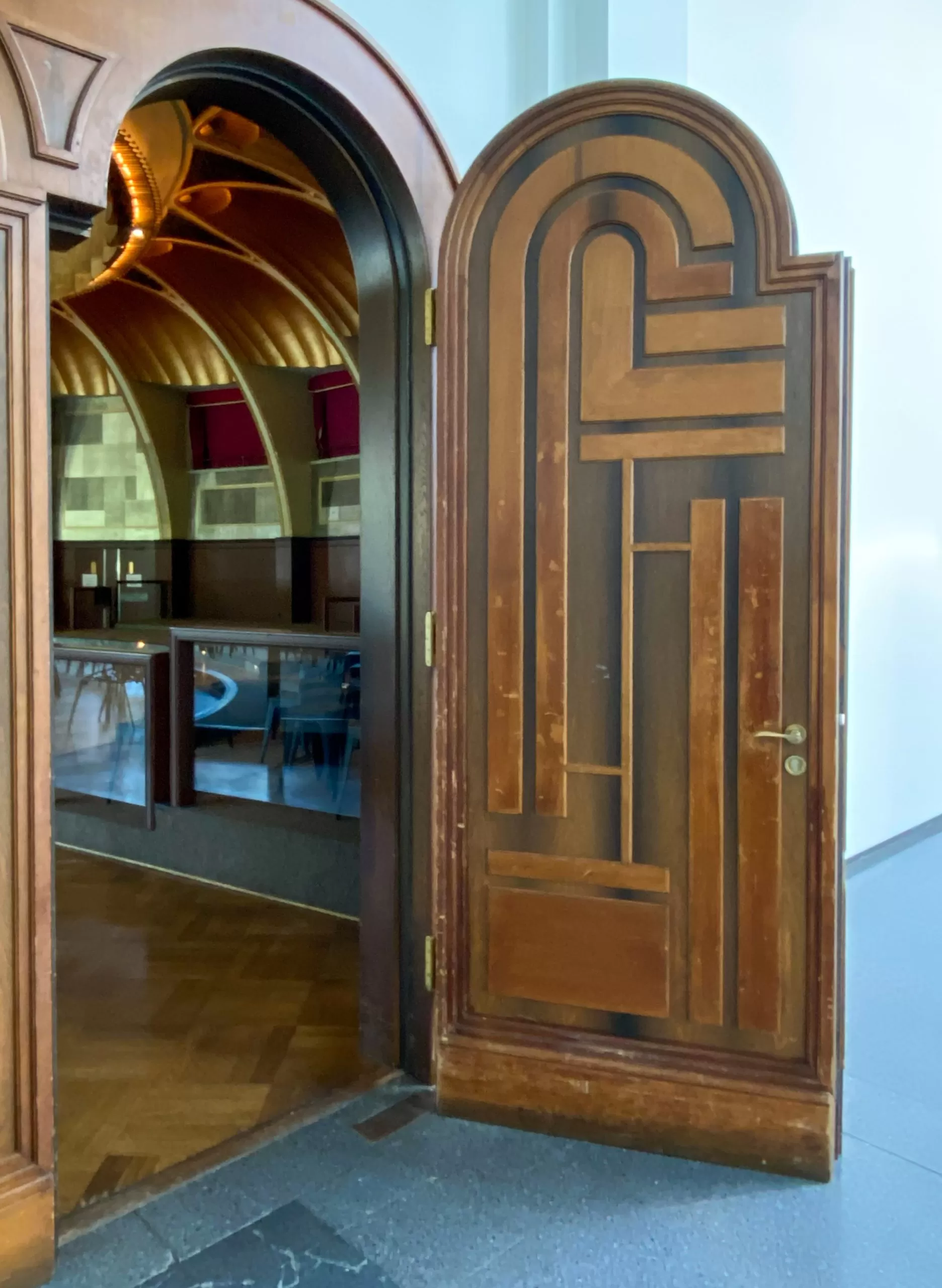
Rheinterrasse, 1924-1926. Architect: Wilhelm Kreis. Photo: Daniela Christmann
Architect Wilhelm Kreis
Wilhelm Kreis was a co-founder of the Deutscher Werkbund and from 1908 director of the Düsseldorf School of Arts and Crafts.
He was appointed to the School of Arts and Crafts in Dresden in 1902, after his designs for temporary buildings had won awards at the World Exhibition in Paris in 1900, the International Art Exhibition in Dresden in 1901 and the World Exhibition in Turin in 1902.
Interior Design
Inside, the Rheingold Hall is vaulted by a shell-shaped umbrella dome, from which buttresses divide the wall into individual panels. Each wall section is in turn covered by a shell.
The dome ends in a conical ceiling crown designed by Kreis and made of mirrored glass panels with rotating colored light.
Wall paintings by Ernst Aufseeser filled the wall spandrels; nowadays they are concealed under a veneer of hammered silver.
All other rooms in the Rheinterrassen were also fitted with lamps designed by Wilhelm Kreis and murals.
The pillars of the domed vault underlined the cave-like character of the room, while the color and material design emphasized its representative function.
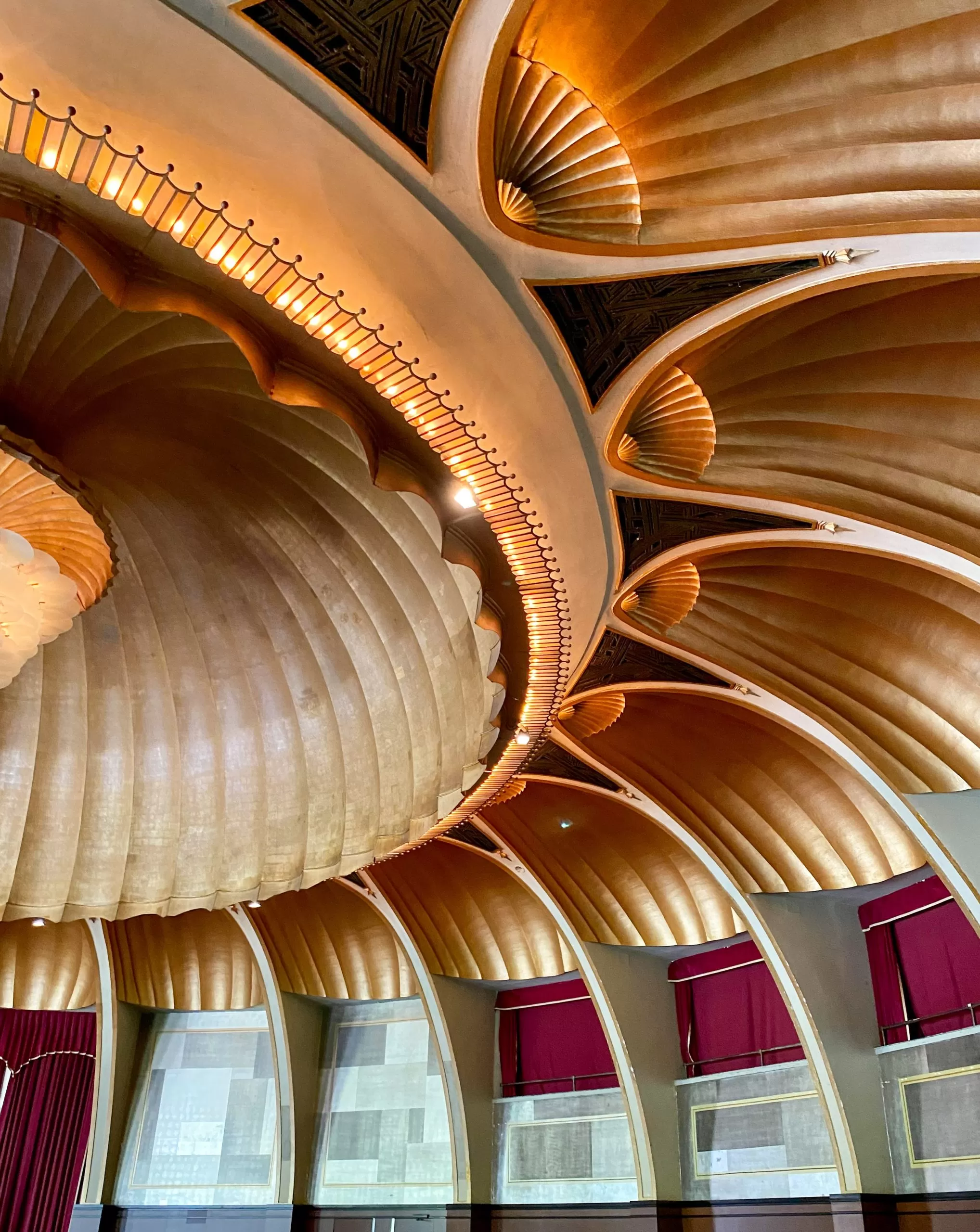
Rheinterrasse, 1924-1926. Architect: Wilhelm Kreis. Photo: Daniela Christmann
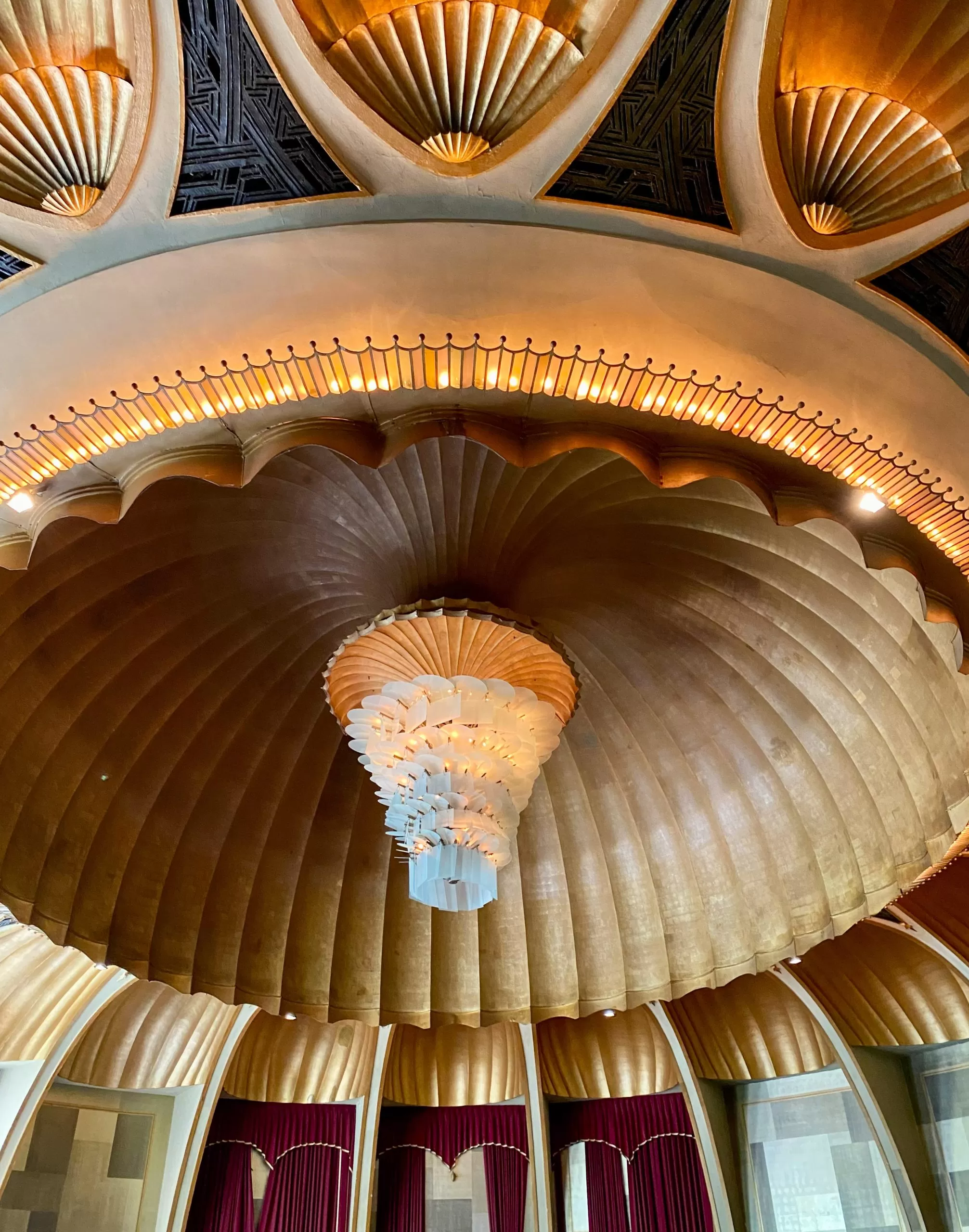
Rheinterrasse, 1924-1926. Architect: Wilhelm Kreis. Photo: Daniela Christmann
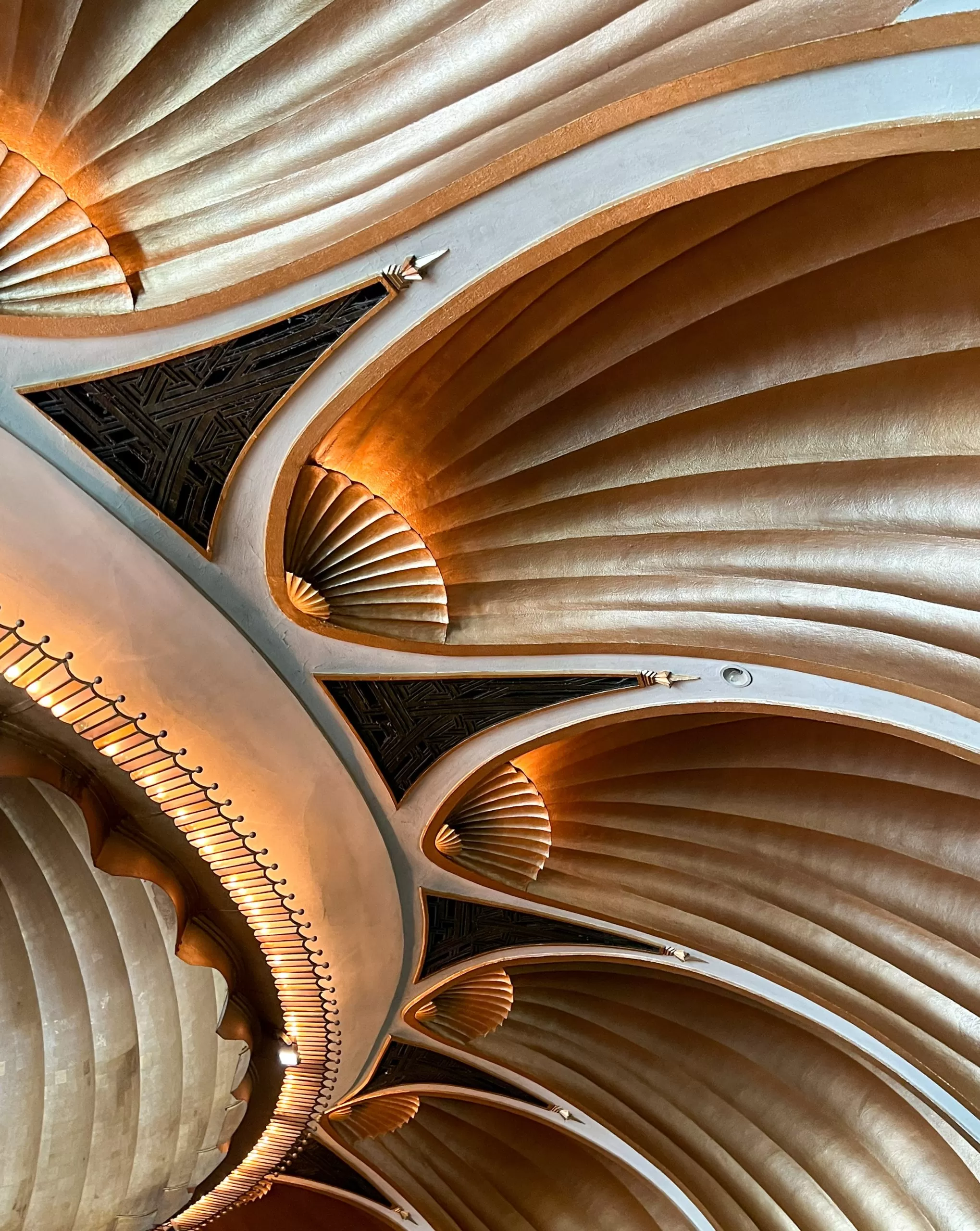
Rheinterrasse, 1924-1926. Architect: Wilhelm Kreis. Photo: Daniela Christmann
Outdoor area
At the rear of the building is a large terrace facing the Rhine with a pavilion and steps.
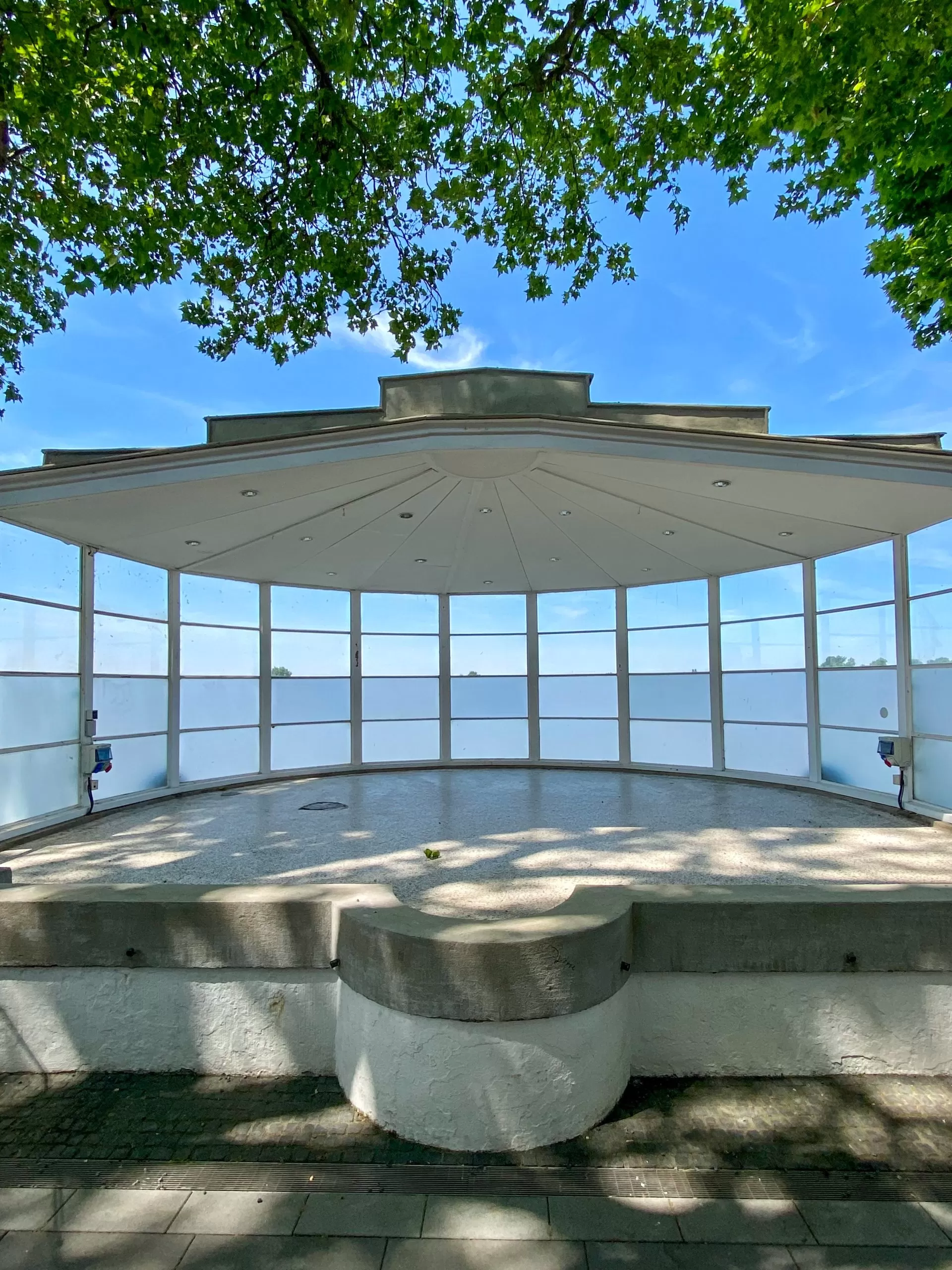
Rheinterrasse, 1924-1926. Architect: Wilhelm Kreis. Photo: Daniela Christmann
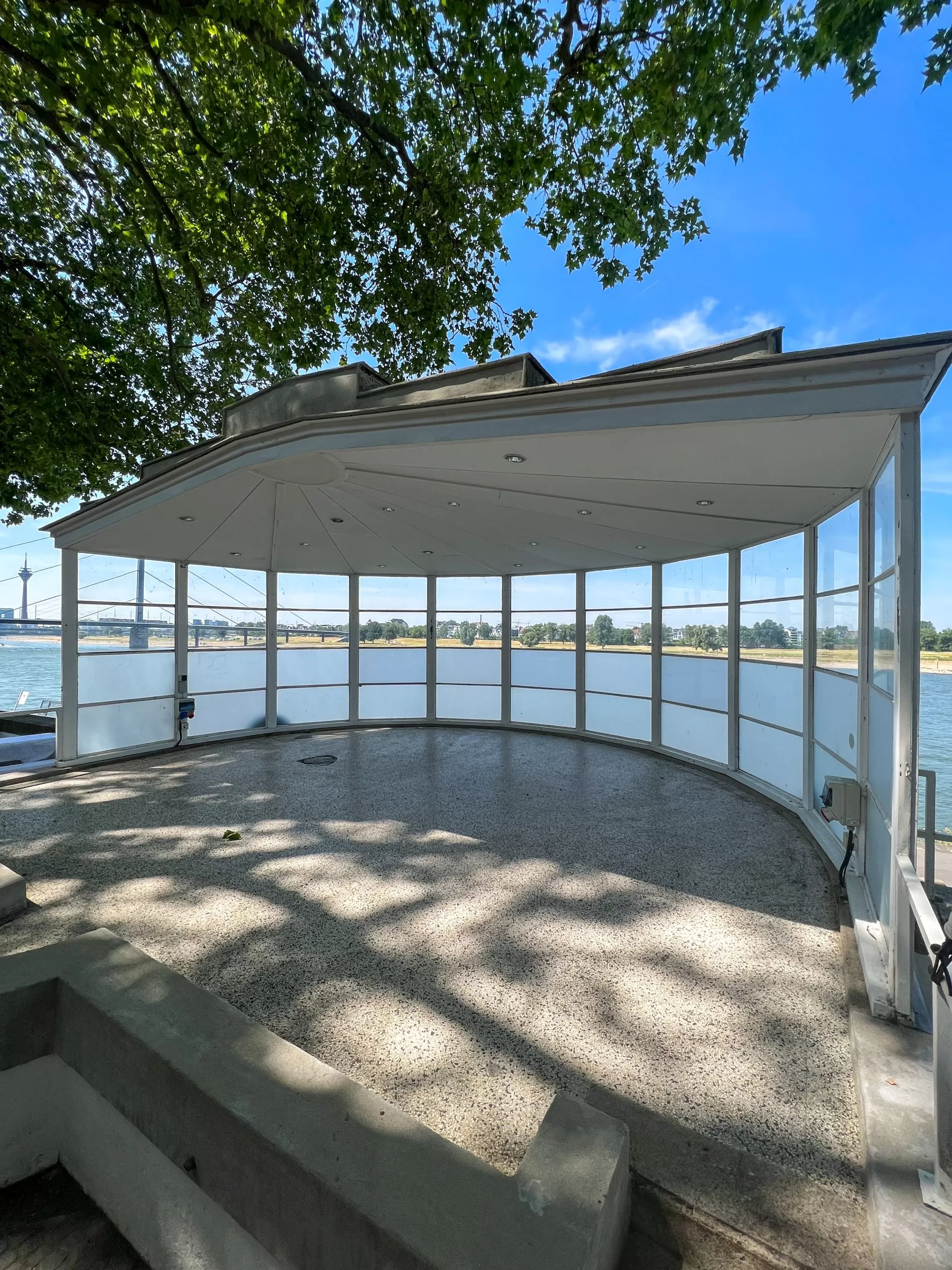
Rheinterrasse, 1924-1926. Architect: Wilhelm Kreis. Photo: Daniela Christmann
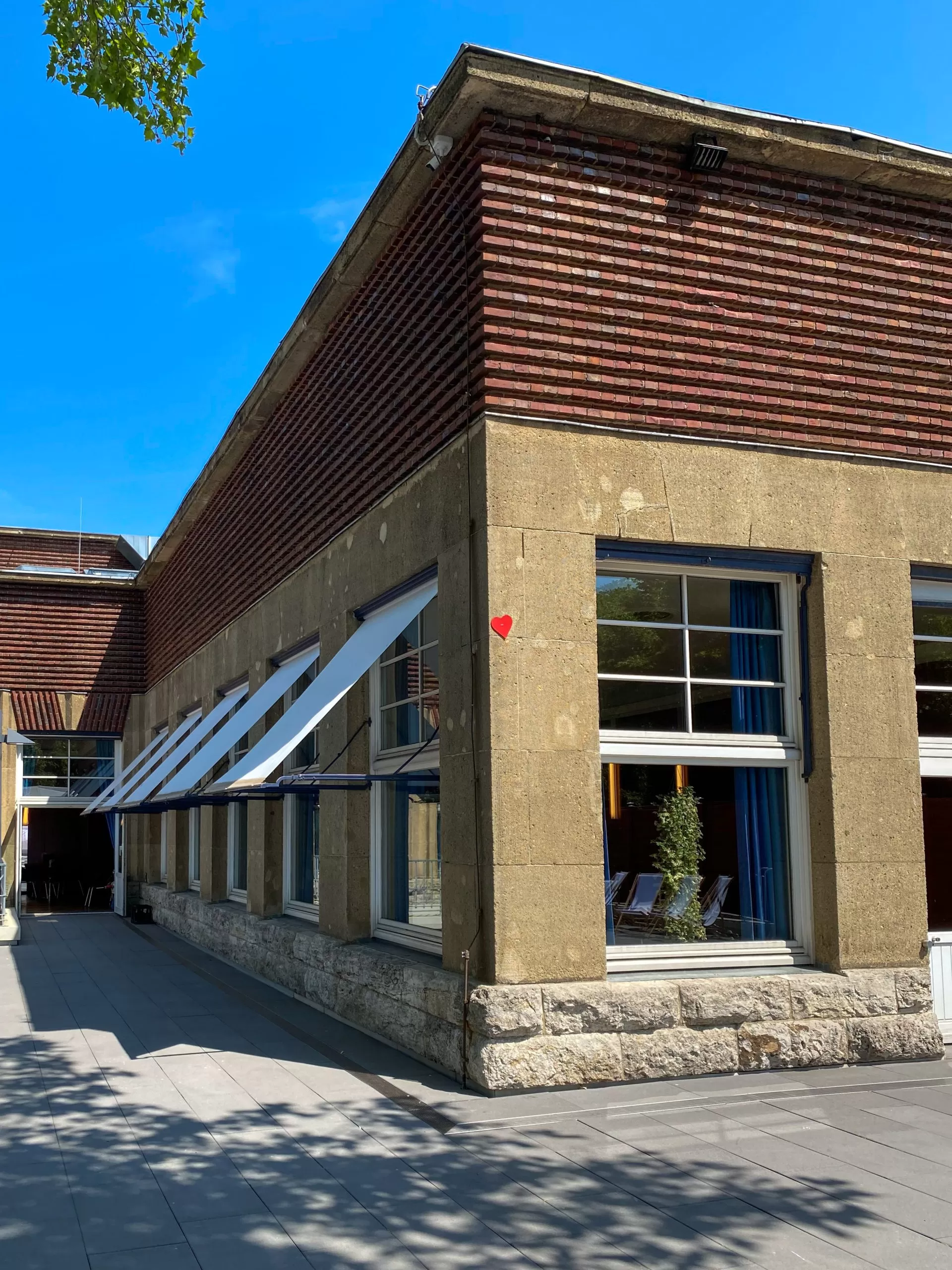
Rheinterrasse, 1924-1926. Architect: Wilhelm Kreis. Photo: Daniela Christmann
Monument Protection and Conversion
Since 1982, the Rheinterrasse building ensemble has been a listed building.
In 1994, it was converted to designs by Helmut Hentrich (HPP architects). In this context, the so-called Radschlägersaal was added with large glass surfaces in steel skeleton construction.

